The Hand of Merlin Xbox One Review
The plot of The Hand of Merlin will enthrall fans of the Arthurian legend, while RPG and strategy gamers will get engrossed by its gameplay.
Reviewed by Rayan on Jun 29, 2022
An Arthurian tale meets a supernatural nightmare. Room C Games and Croteam's The Hand of Merlin is a charming turn-based roguelite RPG that most have overlooked, probably because the game has quietly launched on consoles after a long wait in Early Access. The game breathes new life into a narrative that has been repeated a myriad of times by combining the works of Lovecraft with the Arthurian legends and setting them in a creative fantasy universe. We have been entrusted by the legendary magician Merlin himself with the task of gathering a band of brave warriors and leading them on a journey from Albion to Jerusalem to save as many planets as possible from an impending threat to the universe. While the plot is somewhat usual, the gameplay concept makes The Hand of Merlin more captivating.
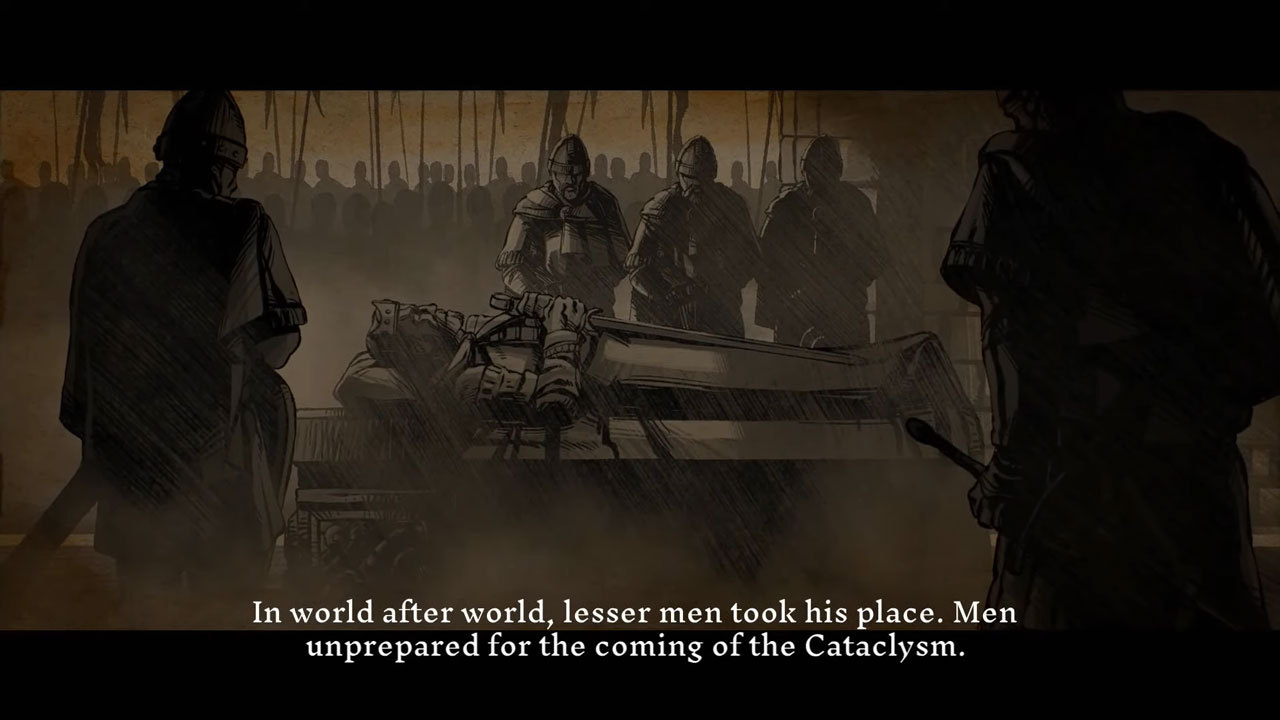
Because of its roguelite nature, the game's content is produced randomly for each run. It requires traveling across several parallel universes, each of which has its version of history. Every time you travel to a different world, there is always a new King governing the nation, which means that the situations you find yourself in, the people you interact with, and the fights you engage in will all be different. The debate's outcome, the distribution of resources, and battles are all up to you. Every decision will affect the story and how you play the game. Due to this, the potential for many playthroughs is significantly increased because no two plays will ever be identical. If you successfully save a planet, then that world will remain safe perpetually. However, if you cannot rescue a planet, that world will be destroyed beyond recovery.
To keep things simple, the plot of The Hand of Merlin is made up of a single major event, with much smaller, emergent ones occurring during the game's different runs. A dreadful Cataclysm is slowly polluting the earth and wiping out life, and the ghost of Merlin the Wizard is the only hero of the Round Table who can do anything about it. This is the primary premise of the narrative of the game. Merlin can travel around the universe and assist many different groups of warriors in their mission to preserve their planet. If they cannot succeed and falls, Merlin will abandon them and go to another reality to attempt again.
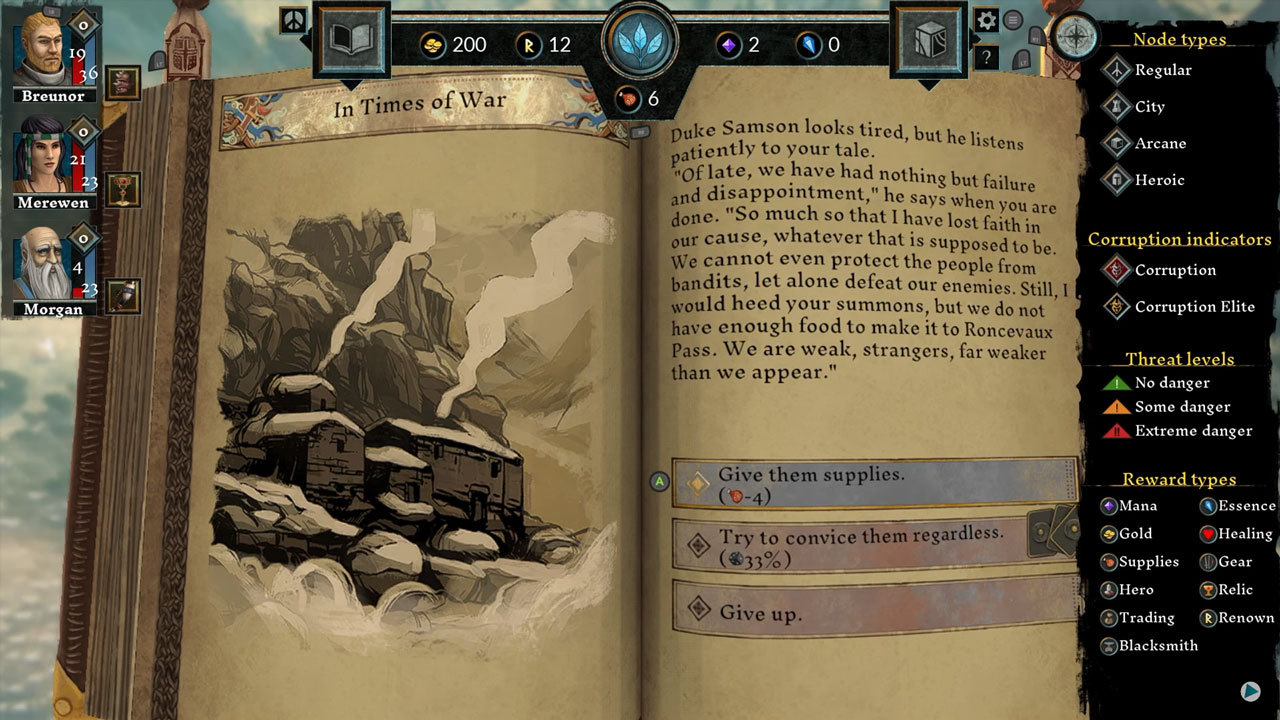
As a player, you must reestablish order across the several worlds thrown into disarray due to the Cataclysm. This cataclysmic occurrence is filling the earth with ferocious abominations and poisoning the atmosphere with an evil aura of misery and chaos. Your responsibility is to lead the heroic caravan to its final destination from various starting points. Defeating bandits, completing missions, saving people, and, most importantly, doing all in your ability to restore order and peace to a planet and any other worlds you visit are some of the things you will be responsible for.
These game events take place in a post-Arthurian version of Avalon, which has been ravaged by alien offspring that came from a separate realm to invade. The game's objective is to make your way through several different areas and stop the invasion at various nodes. When you reach the nodes, you will be presented with options, each of which will have repercussions. Your journal will be opened whenever you visit a new node. You will encounter various characters and difficulties throughout the journal, all of which will need you to decide.
You are constantly confronted with the results of your choices, and in each playthrough, you'll gain insight into the opposition you will be fighting in the future. Every time a new game starts, it will take place in a dimension similar to the first, but history will have unfolded somewhat differently. Some slight variations in events and nodes occurred throughout the reigns of Arthur's successors, but the plot remained primarily unchanged. On the other hand, you might confront a few different outcomes depending on the decisions you make inside the crucial nodes.
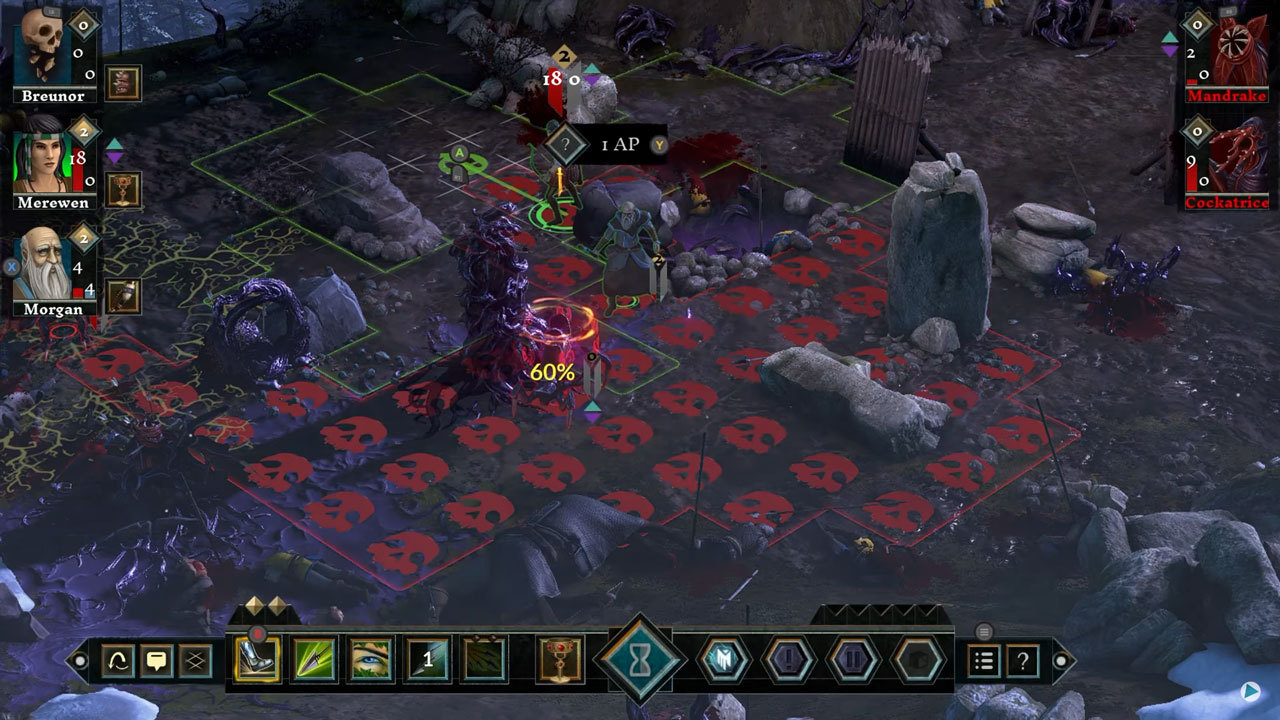
The gameplay of The Hand of Merlin is relatively easy to understand when you first begin. It's a turn-based role-playing roguelite in nature, so each match contains random aspects that will affect how the adventurer will progress through the game. You begin on a vast area of nodes and access three types of heroes: Warrior, Ranger, and Mystic, each with unique characteristics, abilities, skills, and equipment. Mystics are specialized in recovery methods and effecting buffs and debuffs on friends and enemies. Warriors specialize in dealing physical damage via close-quarters combat, and the Rangers specialize in dealing damage from a distance.
At the beginning of the game, only one hero is obtainable from each class. The remaining ones are unlocked when we go through a campaign and by completing particular tasks, such as killing a predetermined number of enemies in a match, eliminating enemies in battle without receiving any damage, or completing a specified task while traveling before arriving at a specified location, etc. Additionally, each character has unique passive skills, which may or may not be helpful to the party throughout the various battle rounds.
In addition to carrying around two of the most important resources, namely gold and supplies, your team also has a cache of relics that, when used in combat, might bestow unique benefits or even abilities onto your party. Gold and supplies are necessary to survive during your trip; however, you can also make it through your adventure without them. Advancing from one node to another will use up resources and set off an action or an interaction, with the tale being revealed via text along the way. Players will have the opportunity to decide what course of action the party will take, with the possible choices being determined by the characteristics of the heroes.
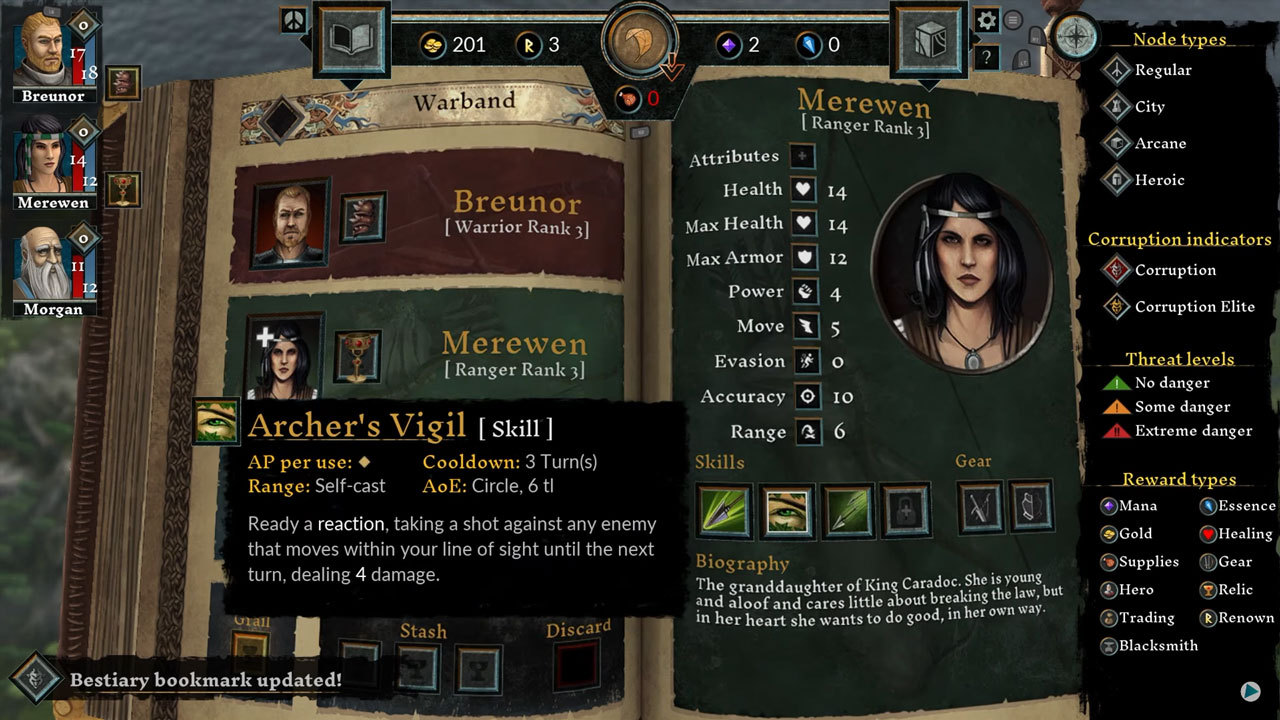
The combat of The Hand of Merlin is similar to that of other games in this genre. When a fight screen is activated, the game changeovers into turn-based role-playing with tactical mechanics. You can utilize aspects of the environment to your advantage to tactically avoid being overwhelmed by the activities of your opponents. You’re given two action points for each character, which are used on various actions before switching to the enemy moves. Depending on the capabilities of each character, you can conduct two move actions, either attacks or special moves, or repeatedly attack if it is feasible. Most of the time, each character's turn consists of acting in two primary ways: making a move and launching an attack. Using natural barriers like rocks or logs as a protection against arrows, tossing enemies into rocks to do more damage, building traps to ambush enemies, and many other strategies are possible given the right conditions and options.
Most encounters result in a fight, triggering the game's transition to the fight screen. Each character has two bars: one for their health and one for their armor. Any damage dealt with first affects the armor bar, and only then it affects the health. After each fight, everyone's shield and armor are returned to total health; however, characters' vigor can only be replenished in towns or during special events. When the character’s health reaches zero, they are permanently killed and take their statistics and any equipment they wore along with the passing. Later in the game, you can recruit new characters that are more equipped than the rest of your party, but this is not always the case since it's rare to find a class that matches the parted warrior.
Because it covers all parts of the game, the help menu makes it simple to access and comprehend all of the game's features. This makes the game much more pleasing. During the first playthrough, there are hints to assist with the gameplay, and a banner on the left corresponds to the kind of node you are now dealing with. Indicators of corruption, threat levels, and other rewards are also displayed on each node. During any battle, you have access to the same statistics chart. You can see your and the enemy's stats with a rundown of all the buffs, debuffs, and abilities. The square grid displays information on the capabilities of your party's movement, such as the extent of their skills and the area of influence they have, including the percentage chance that an attack would be effective.
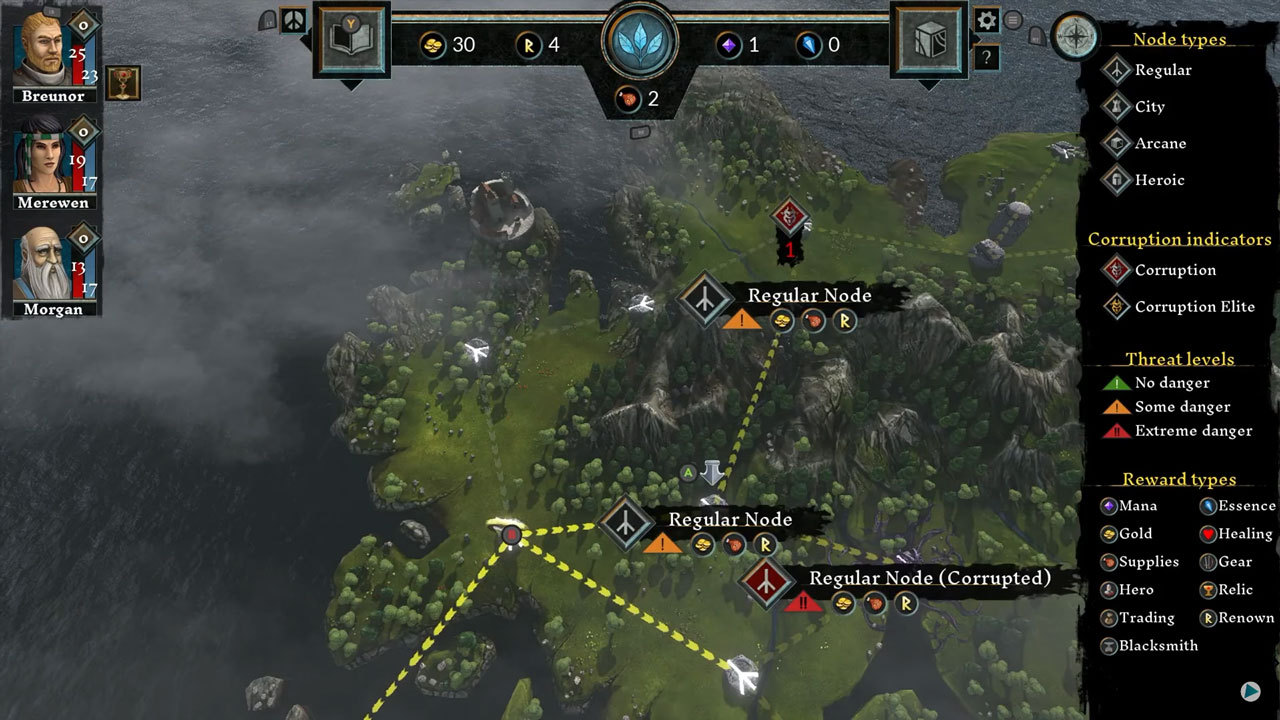
As you progress through the several objectives on the map, your party will travel from one node to the next. Throughout different nodes, you will acquire new knowledge of the plot and environments of the game, which will need you to do a lot more reading. You'll need to give importance to what has to be done to determine what courses of action to take. Some of these incidences might lead to conflicts, during which you must fully use the powers bestowed upon your heroes to prevail over the many challenges you will face.
You'll receive Renown in proportion to the number of enemies you kill in fights which can be used to increase the hero’s level. When you use Renown to upgrade your heroes constantly, you can either receive a randomized selection of new abilities or improve their existing characteristics. Because this is a roguelike game, you'll need to strike a balance between increasing the qualities of your characters and obtaining access to new talents to ensure that your party is well-rounded enough to face the difficulties ahead. When it comes to improving their abilities and selecting which spells to carry into combat, it is crucial to plan since your decisions will significantly impact the likelihood of succeeding in your future undertakings.
Once the Renown keeps stacking, you can continuously improve the heroes by using a skill graph that offers a wide selection of upgrades and purchasing new weapons and equipment. In addition, you also have access to countless spells granted by Merlin, the Grail, and the legendary artifacts you acquire while traveling. These artifacts are strong enough to change the course of any given fight quickly. To a similar extent, you will need to have a certain degree of expertise in the game's mechanics to try and make the most of your characters' talents. It’s not cowardly if, for example, you play intelligently by allowing one of your characters to deal with the assaults. At the same time, the other two strive to get as far away from the combat as possible so that their cooldowns may complete in peace.
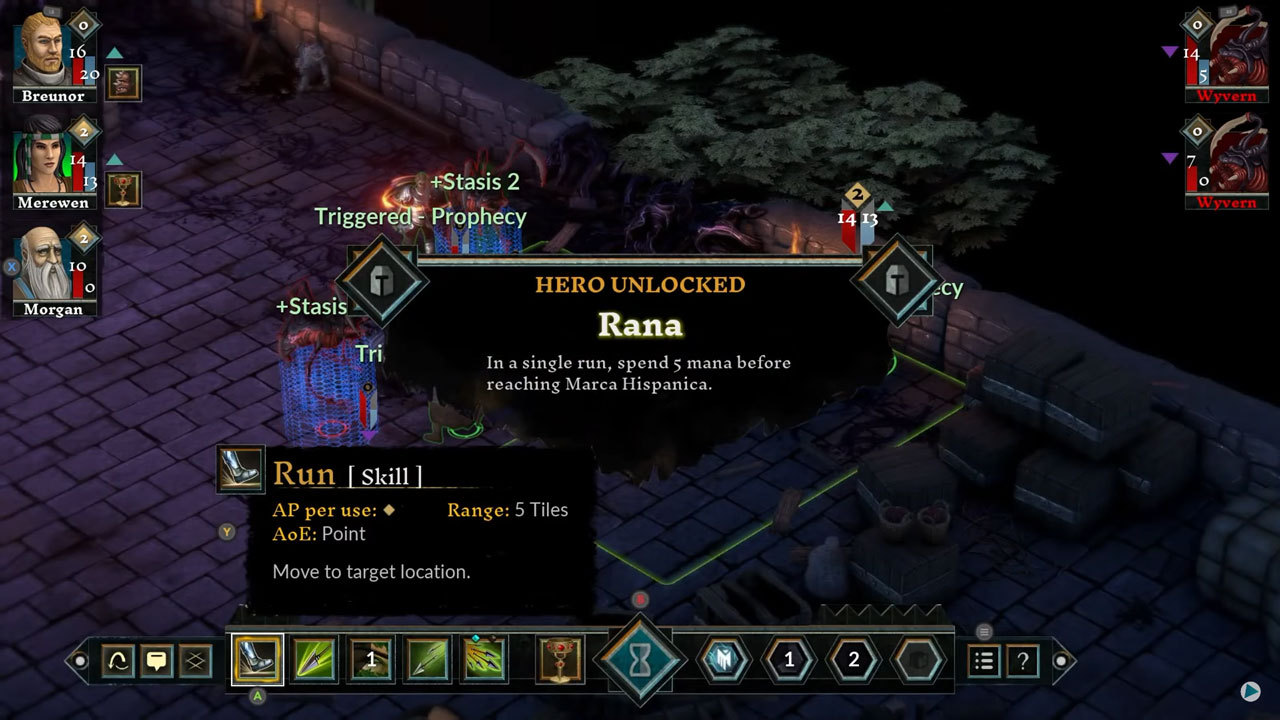
The game's difficulties get more manageable as your party gains strength during the game. Thankfully there's also Magical Essence, which is a unique item. This very scarce resource can only be obtained throughout several runs and is essentially money for gaining access to more Guardians. As you go through the game, you'll be able to gather a variety of strong wizards to help direct your journey. Nine strong spells are available to each Guardian, spread over three levels, and you may pay mana to use them. Even though they're capable of reviving and buffing characters to the point where they're unstoppable in combat, these spells must be employed with great caution. Mana, the resource required to power them, is tough to come by in a run, and it's not uncommon to run out of it when you need it most.
However, although using them early on in the region to rapidly take out a big adversary or cope with particularly tough combat may be enticing, the late stages of a location are when their actual efficacy is shown. Because these spells need mana to cast, players can't just use them haphazardly, yet a single cast of any of them in any combat may transform an otherwise insurmountable conflict into a tame one. During the last battle of each region against strong bosses, the abilities of these characters show the most. To avoid being overwhelmed, you'll need to replenish your mana supply before this combat begins. However, when you start strengthening your party by enlisting other heroes along the way of your adventure, the odds start tying in your favor.
While the gameplay is enjoyable, the same can’t be said about its presentation. Although the graphics of The Hand of Merlin aren't terrible by any means, there's no denying that they were missing some potential for improvement. When you reach new nodes, you'll be greeted with storybook-style sequences, which are a nice touch, but the graphics lack creativity. The characters are plain and drab, the surroundings are gloomy and unmemorable, and there's not much flare. There is also no animation to differentiate the characters from one another. Additionally, the game's audio mix is mediocre. While most of the game's audio is common, numerous action sound effects seem out of place. They do not provide any flavor and do not in any way enrich the experience.
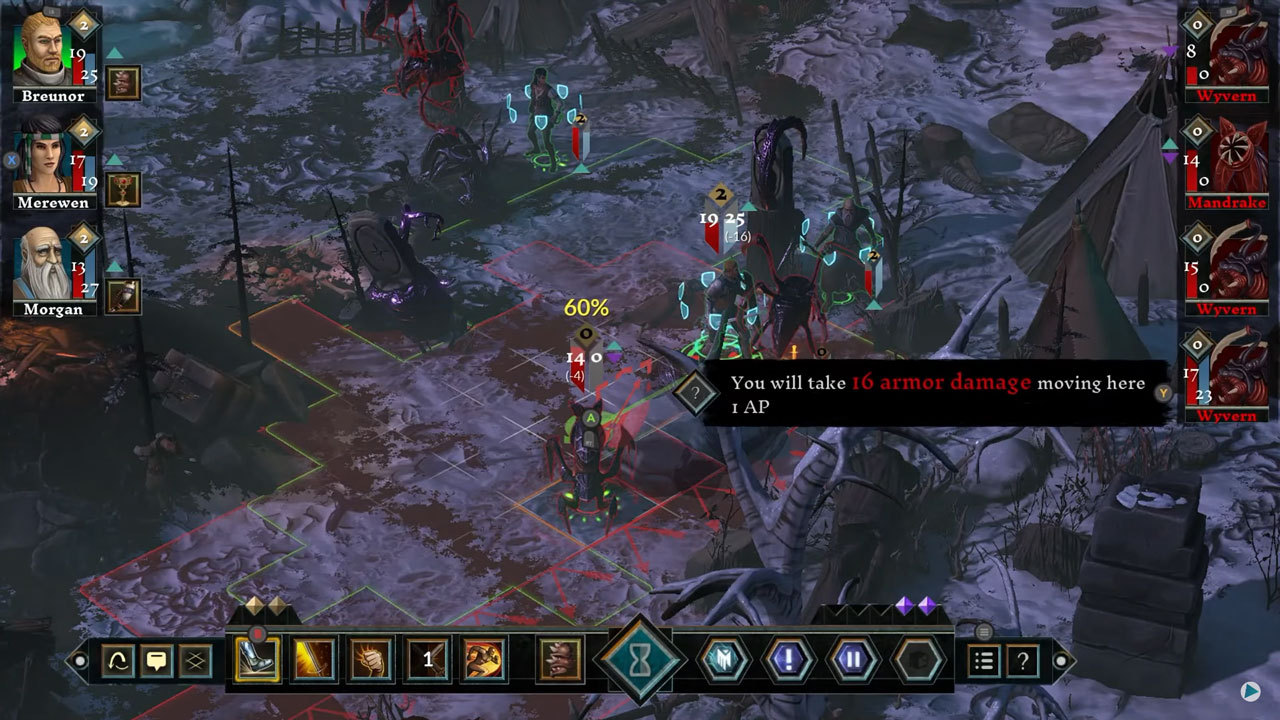
However, The Hand of Merlin still provides an intriguing and captivating experience despite its graphical shortcomings. It's undoubtedly a challenging game while unique in many ways and an excellent take on the roguelike experience. There is a good balance between the game's fighting system and its overworld area. The diversity, however, tends to become somewhat insufficient after a few playthroughs, and the game becomes monotonous rather quickly. If you'd enjoy a traditional tactical turn-based game with RPG advancement, non-linear story creation, and some roguelite elements, then you should get a hold of The Hand of Merlin if you can get beyond these flaws. The plot will enthrall fans of the Arthurian legend, while RPG and strategy gamers will get engrossed by its gameplay.
Azfar Rayan (@AzfarRayan)
Editor, NoobFeed
Senior Editor, NoobFeed
Verdict
70
Related News
No Data.

